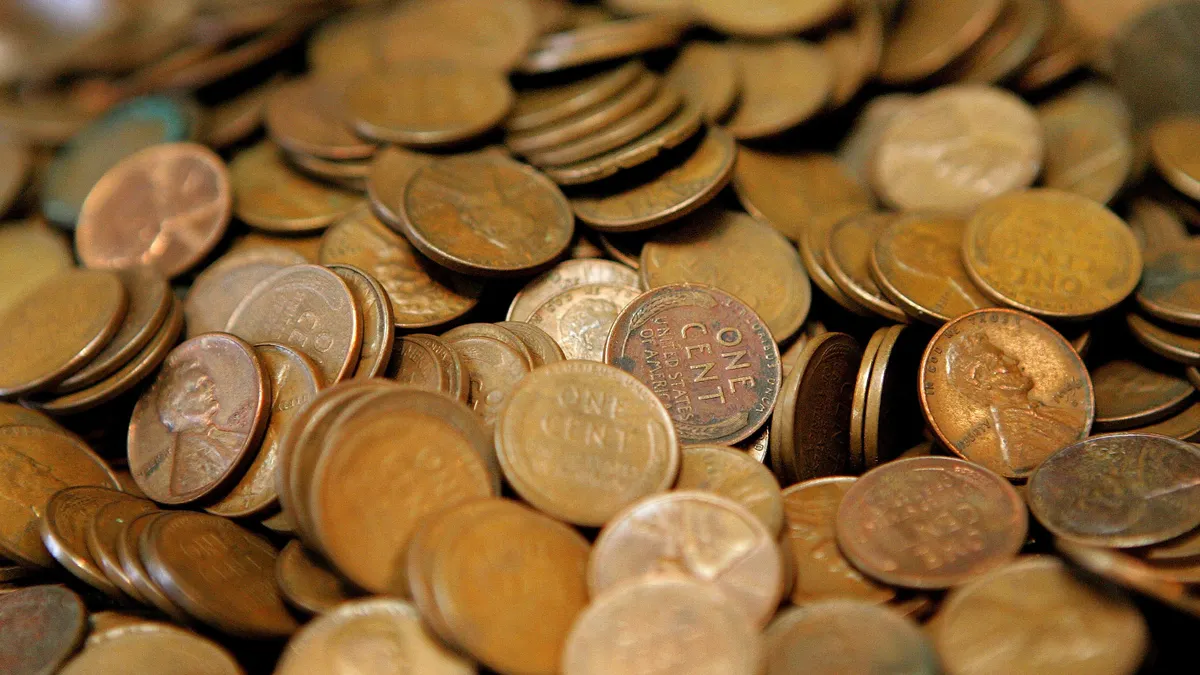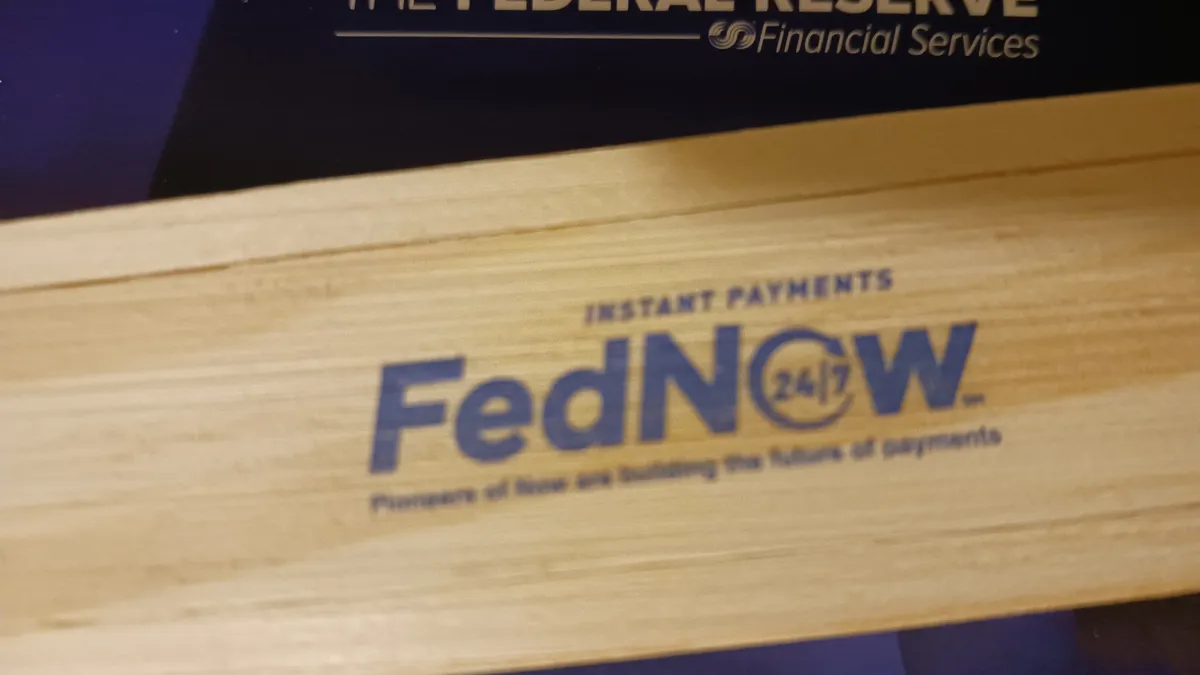Dive Brief:
- American consumers will pay $6 million more annually for goods and services as merchants round up prices to account for the fading availability of the U.S. penny after it’s no longer minted next year, the Federal Reserve Bank of Richmond estimated in a report this month.
- “As pennies phase out, businesses are likely to round cash transactions to the nearest 5 cents, resulting in a ‘rounding tax,’" the Fed bank’s report said.
- The additional collective cost to Americans is still less than the $85.3 million the federal government lost last year on production of some three billion new pennies, according to the report.
Dive Insight:
The penny bearing President Abraham Lincoln’s profile has been in circulation since 1909, and the coin in any form has been passing from hand to hand since 1793, according to the United States Mint. While the one cent coin was initially made from copper, the latest versions are mainly zinc with a copper coating.
In February, President Donald Trump, who had been in the White House for less than a month, called on the U.S. Treasury to stop making pennies, citing the cost inefficiency. A single penny costs 3.69 cents to make, according to the Richmond Fed report.
A Treasury Department official confirmed in late May that the U.S. Mint had placed its final order for the blanks that become pennies. The blanks are expected to run out early next year, leading to the end of production, but the penny will remain in circulation as legal tender.
The decision comes as countries around the world, including the U.S., increasingly turn to electronic payments and digital alternatives. Just last Friday, Trump signed a bill that provides a federal regulatory framework for stablecoins, a digital asset that is typically pegged to a fiat currency, such as the U.S. dollar.
Cash, including coins, remains an important form of payment for some U.S. households, particularly those that are unbanked and underbanked. In a 2022 survey regarding cash, 93% of respondents said they have no plans to stop using cash, according to a 2023 Federal Reserve Financial Services report.
Still, a lot of the coins are stuck between couch cushions or laying on sidewalks. And the Fed services arm estimates that $10 billion to $14 billion is sitting in those ubiquitous coin jars that consumers throw their loose pennies, nickels, dimes and quarters into when they empty their pockets.
Slowly coins are making their way back to the bank. Coinstar, the company that allows consumers to count and cash in their coins at its kiosk, said in a release Tuesday that it has 15 million consumers signed up to transfer coins to accounts at its kiosks.
The share of U.S. transactions made with cash continues to decline, with only 14% handled by that method in an October 2023 consumer survey, according to research on cash use by the Atlanta Federal Reserve Bank.
With the extinction of the penny, the nickel will become more important in transactions. If the nickel were ever to be discontinued, the rounding by merchants would have a much more significant impact, lumping an additional $56 million cost annually onto consumers, the Richmond Fed report predicted.














